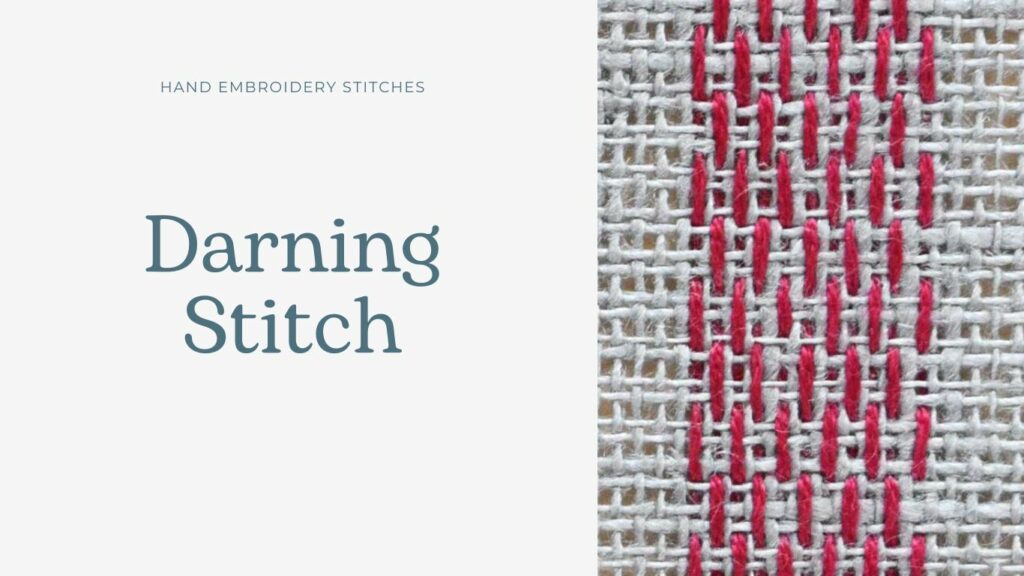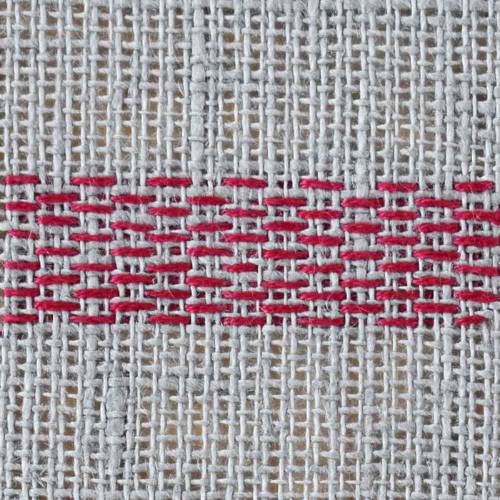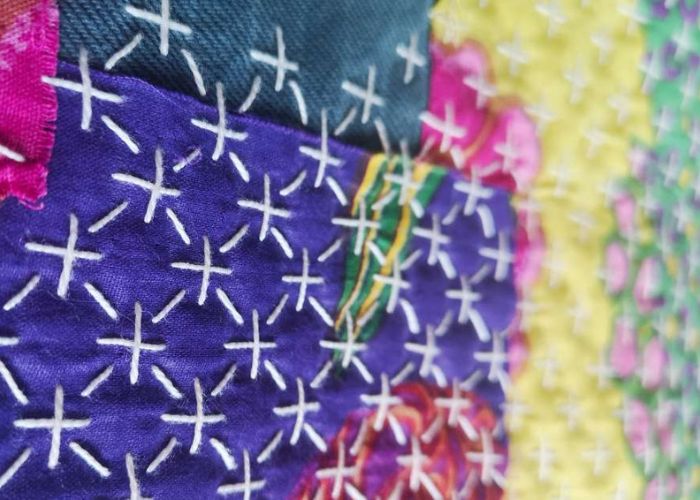
Darning Stitch
This practical embroidery stitch is one of the variations of the Running stitch used for filling. This stitch is created by alternating parallel rows of the running stitch to create a pattern with both negative and positive elements.
Other Names Of The Darning Stitch
This stitch is also called Darned embroidery or a Tacking stitch. If the decorative design is created by alternating the positive and negative space of the stitches, it can be called Kogin stitch.

Applications Of The Darning Stitch:
- This stitch is normally a form of counted embroidery worked on the even-weave ground.
- As the stitch’s name suggests, you can use it for darning. The fabric filled with these stitches will be reinforced and last longer.
- Use this stitch for other mending projects, like adding a patch or covering a stain.
- You can also use the darning stitch for decorative purposes – use it as a filling stitch to add depth and texture to your embroidery project.
- Use a variation of the stitch – Kogin to create decorative pieces.
More Stitches From The Running Stitch Family Family
You will find even more stitches from this stitch family in the article “Running stitch and its variations” on this Blog.
Video tutorial
If you are a visual learner, watch a video tutorial below or on the Practical Embroidery YouTube channel. In this video, you’ll find easy-to-follow, step-by-step instructions that will have you creating the Darning stitch like a pro in no time.
What’s next?
If you’re in the mood to explore more hand embroidery stitches, check out the Stitches and Techniques page for the list of other fantastic stitches available on my blog. From timeless classics to modern twists, a whole world of stitches is waiting for you to explore and master. So, grab your hoop and needle, and let’s stitch our way to creative bliss!
Need More Guidance?
The top 10 hand embroidery stitches to learn is a free online course created for beginners.



